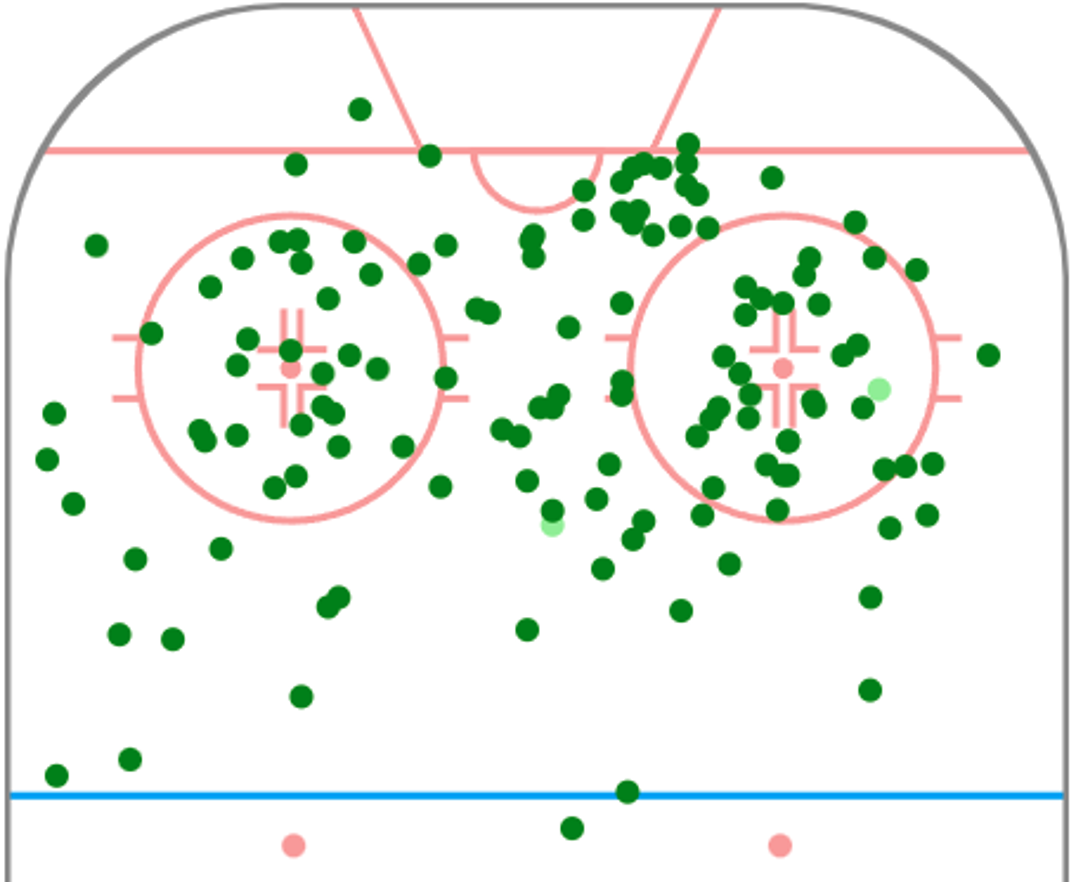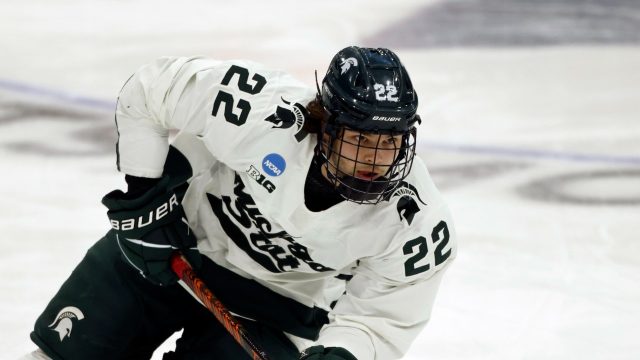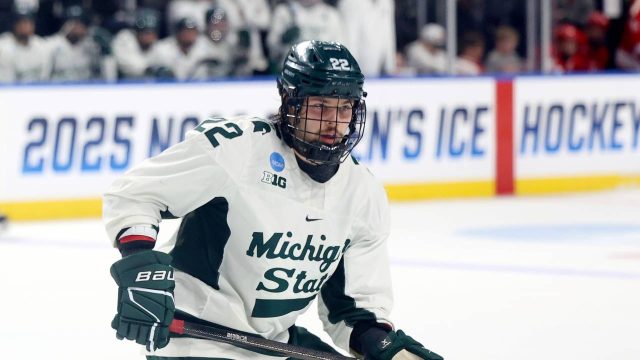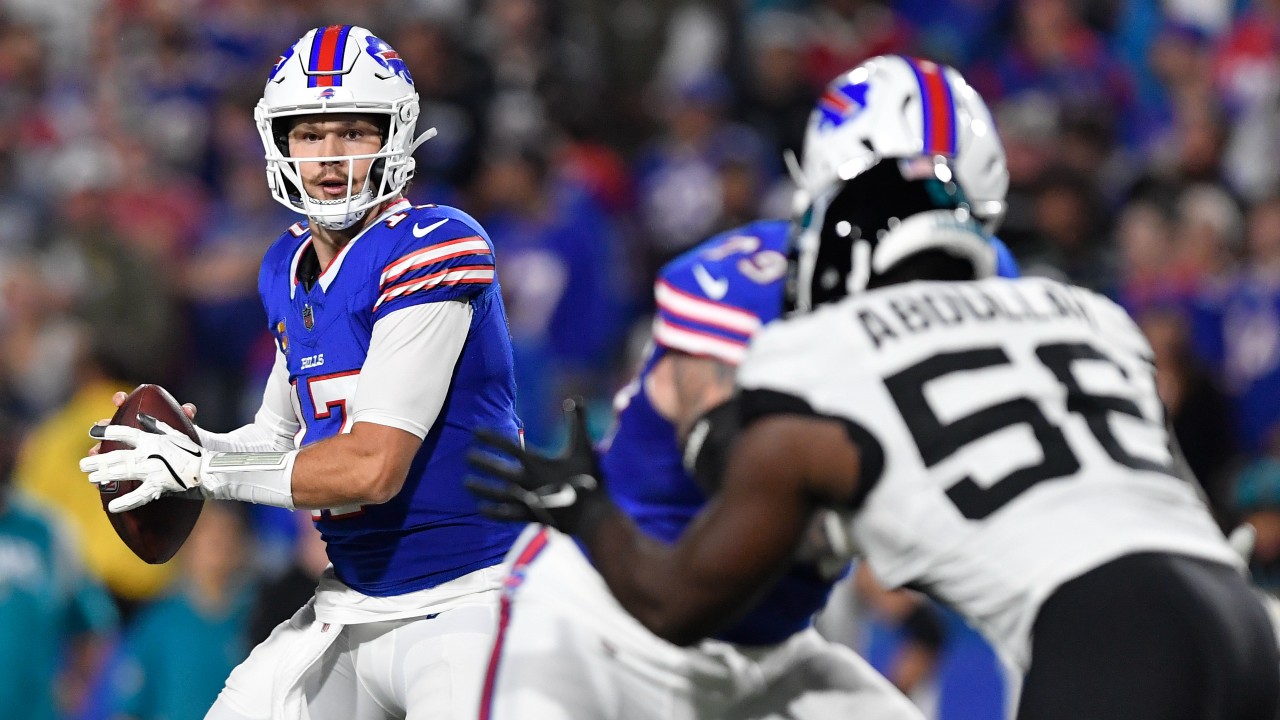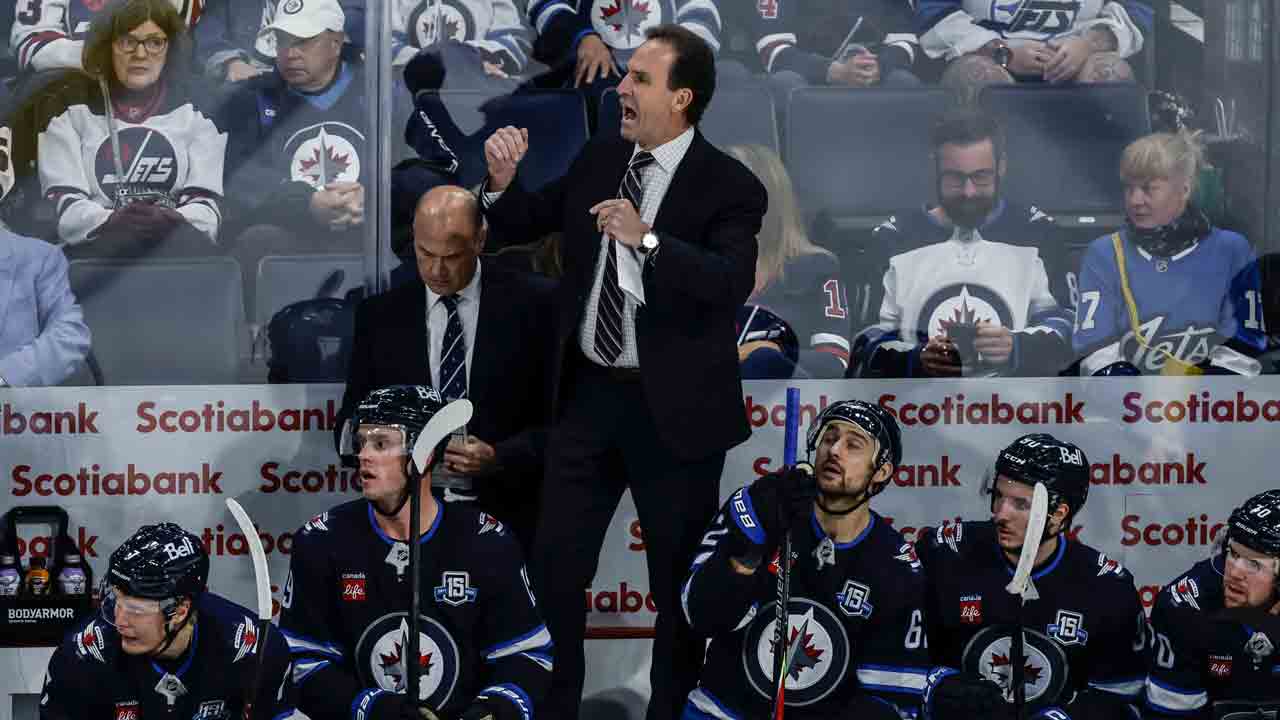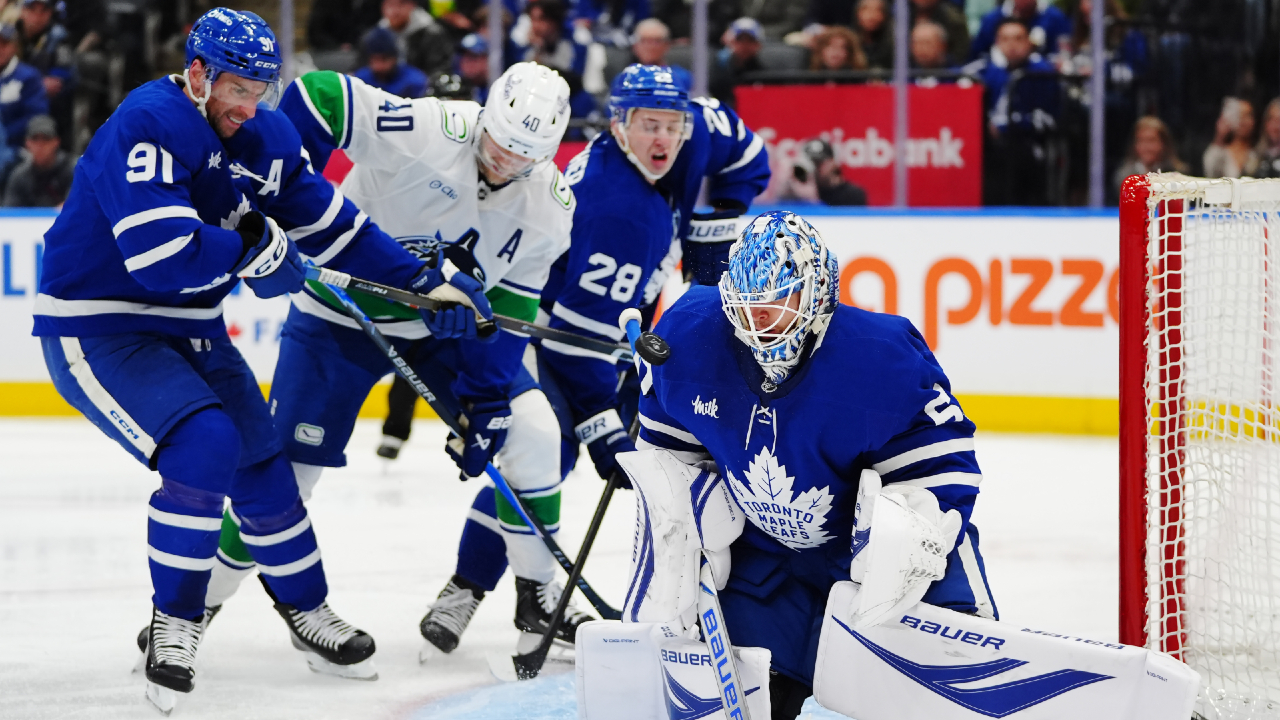
During their contending years, the Tampa Bay Lightning have traded away so many of their draft picks that they now have one of the thinner prospect groups in the league. But Isaac Howard, a 21-year-old winger drafted with the 31st-overall pick in 2022, represented a young scorer who they hoped would be added to the NHL group before too long.
However, after his season at Michigan State ended, Howard announced his intention to return to the Spartans for his senior season instead of signing with Tampa Bay. That would have put him on track to become a free agent in 2026 and choose his own destination.
“When I chatted with Isaac, he was pretty candid, and I appreciated his honesty, and I thank him for his honesty,” Lightning GM Julien BriseBois said in May. “He values the opportunity to choose the club that he believes is the best fit for him. And I won’t speak for him, but he values that. Right now, I would say it’s unlikely that we will sign him.”
Rather than lose him for a later compensatory pick a year from now, the Lightning moved on a trade this week, sending Howard to the Edmonton Oilers for Sam O’Reilly.
Howard quickly signed his entry-level contract with Edmonton and will join the Oilers at training camp in the fall instead of returning to the NCAA. Howard said the Oilers were his first choice.
“Super cool moment,” Howard said Wednesday. “I met with Edmonton and this was probably the spot I wanted to go. Just checks all my boxes. I knew somehow if it could happen, I would absolutely love it.”
As the Oilers make some adjustments to their roster, one area they still had room to address after the early days of free agency was in the top-six at wing. Though Howard is just 21 and will be coming freshly out of school to training camp, he’ll be expected to make a case to fill one of those roles, whether right out of the gate or earned over the course of the 82-game season. The idea of playing alongside Connor McDavid or Leon Draisaitl clearly appealed to Howard and was one of the reasons why he chose to come to Edmonton.
“I think that’s an unreal opportunity,” he said. “I don’t think you can get any better than that. Those are two of the best players in the world — could be the two best. It’s pretty incredible. I can’t wait to share the ice with those guys (and) pick their brain.”
In Howard, the Oilers get a five-foot-11 winger who scored 26 goals and 52 points in 37 games this past season, earning the Hobey Baker Award along the way. They’re also picking up a young player who clearly wants to be in Edmonton and has been thinking about this fit for some time.
“I think that’s why I was so excited about this fit,” he said. “I watched every single Oilers playoff game last couple years. Just watching, it’s such a high-paced, skilled, fast and work-ethic first, I think that’s my game. I think that’ s why this couldbe such a great fit.”
Going the other way is O’Reilly, Edmonton’s first-round pick from the 2024 draft and a member of the London Knights team that won back-to-back OHL titles and this year’s Memorial Cup.
So what, exactly, are both of these teams getting in the deal? We turn to scout Jason Bukala for a closer analysis of their games.
SCOUT’S ANALYSIS
The trade between the Oilers and the Lightning is interesting on many levels.
In Howard, Edmonton receives a top-six scoring winger who will log the bulk of his ice time at even strength and on the power play. The Lightning welcome a forward in O’Reilly who has the skillset to be deployed in all situations and plays a more complete game than Howard, but isn’t likely to provide the same amount of offence.
To Edmonton: Isaac Howard
Howard was originally selected in the first round (31st overall) by the Lightning in 2022. His first season at the college level was average by his standards (six goals, 11 assists and a minus-13) and resulted in Howard transferring from Minnesota-Duluth to Michigan State. Over the course of the next two seasons at Michigan State, Howard contributed 34 goals and 54 assists in 73 games.
Howard is a play-driving winger who attacks with speed through the neutral zone, has excellent vision in the offensive zone and isn’t shy about driving to the crease to hunt rebounds and tips. He’s stocky strong (five-foot-11, 190 pounds), confident and competitive. He’s a distraction to check and is always around the play.
Here’s an example of Howard leading the power play breakout for the Spartans. He ends up having an open lane to the net off the zone entry, but his teammates elect to set their power play and move the puck from side to side in Notre Dame’s zone. Howard reads how the play is developing and slides into a high-danger scoring area in the middle of the ice before one-timing the puck into the back of the net:
Howard averaged 19 minutes of ice time per game at Michigan State this past season. He was occasionally deployed on the penalty kill, but most of his shifts came at even strength and on the power play. Howard is always looking to direct pucks on net from all areas of the offensive zone. He has proven he can beat NCAA goalies equally from distance and in tight.
Here’s a look at the different spots in the offensive zone from where Howard elected to release pucks to the net in 2024-25:
To Tampa Bay: Sam O’Reilly
O’Reilly will be a useful, middle-six forward in Tampa Bay for years to come. He’s a six-foot-one, 190-pound forward who can play centre and the wing. He averaged just shy of 20 minutes in ice time for London in the regular season, but saw that spike to over 23 minutes in the playoffs and Memorial Cup.
O’Reilly was deployed in all situations and contributed 28 goals and 43 assists in the regular season and another seven goals and 15 assists in 22 playoff games. Over the course of the past two seasons, he was an impressive plus-114 in 163 games played. He plays the game similar to Lightning forward Anthony Cirelli.
Players like O’Reilly are especially valuable come playoffs. They play the game the right way, providing detail and maximum effort on and off the puck in all three zones. O’Reilly can make plays off the rush and has above average puck touch around the net.
Here’s an example of what I’ve seen from O’Reilly at the OHL level in London…
In the following sequence O’Reilly tracks back defensively, protects the middle of the defensive zone, then explodes up ice to join the attack on offence. He reads the puck coming around the boards and slides in front of his opponent to extend the play below the goal line before driving to the crease to receive a return pass:
O’Reilly is the kind of player who might fly under the radar some nights, but he will produce secondary offence and has the hockey sense and compete to match up and check top-six forwards. He’s the kind of “glue guy” teams value in high-leverage scenarios.
Who wins the trade?
I honestly believe both teams did very well in this deal. The Oilers add a player who’s hard to check, aggressive and creative in the offensive zone, while the Bolts add a middle-six forward they can trust in a variety of high leverage situations.



